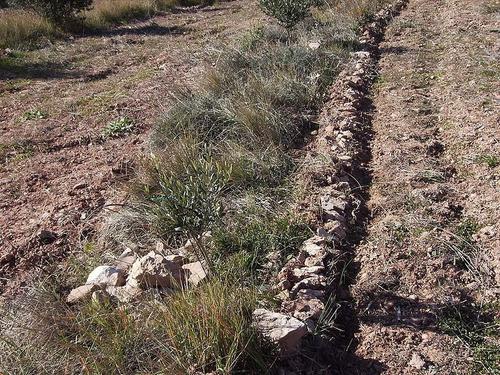Stone lines / bunds (“cordon de pierres”)
Stone lines / bunds are used either as a soil conservation measure on slopes >5 % (bund) or for water harvesting on slightly sloping plains (< 5 %) in semi-arid regions (line). Hence, stone lines combine elements of macrocatchment and microcatchment technologies depending on runoff collected either from an external catchment or in-field. A stone line is typically 25 cm high and has a base width of 35-40 cm. It is constructed of a mixture of small and large stones along the contour and across a field. Smaller stones are placed upslope and the larger ones underneath to slow down runoff, trap fertile soil sediment and enhance water infiltration. The distance between the lines depends on the slope and how many stones are available. The recommended spacing between lines is 20 m for slopes less than 1%, 15 m for slopes of 1-2 %. Stone lines are easy and cheap to construct, provided that stones are locally available. Stone lines are common throughout Africa, in both dry and humid areas. They are used wherever there are loose stones in the field. In the Sahel (especially Burkina Faso and Niger), they are small – at most three stones wide, and one or two high. (Mekdaschi & Liniger 2013)


